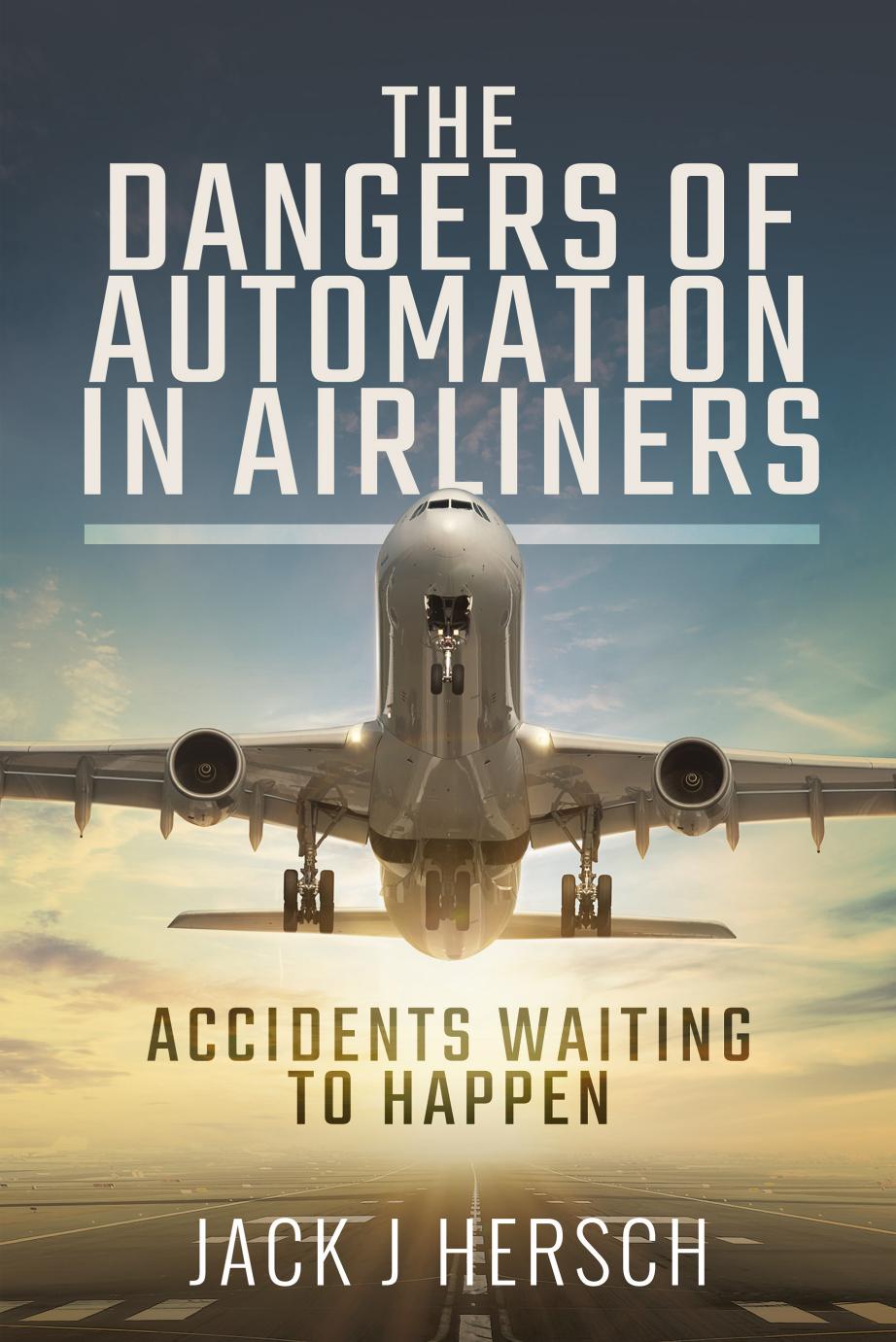The Dangers of Automation in Airliners by Jack J Hersch

Author:Jack J Hersch
Language: eng
Format: epub, pdf
Tags: TRANSPORTATION / Aviation / Commercial
Publisher: Air World
Published: 2020-12-30T00:00:00+00:00
Chapter 33
Guardrails
Bernard Zieglerâs contribution to the A320 went beyond its fly-by-wire skeleton. He also espoused a first-of-its-kind computerized monitoring system that would oversee every control input by the A320âs pilots. Using the computers embedded within the planeâs wiring, every move pilots made would be supervised by software. If it caught them doing something dangerous to the plane and passengers, like banking too steeply, it would stop them. That is known as flight envelope protection. Ziegler called it âthe biggest improvement in flight safety in history.â
That might not be hyperbole.
The flight envelope is the complete range of maneuvers a plane can perform without stalling or experiencing structural failure. By definition, a plane leaving its flight envelope is at least partially out of control. Military and aerobatics pilots might depart their flight envelope during certain maneuvers and are trained to get it back. But in commercial aviation, an airliner departing its flight envelope is unquestionably in trouble.
Airbusâs flight envelope protection software was, in a sense, a pilot babysitter.
This was revolutionary and breathtaking at the same time: it had never been tried before, and it changed the rules for pilots. No longer would they have the final word aboard their plane â computers would. Bernard Ziegler and Airbus could not be sure how pilots would react to something so radically different from what they were accustomed to â not having absolute authority over their aircraft. What if they needed to fly aggressively to avoid a mid-air collision? Would the system prevent them from turning sharply enough, or climbing or descending steeply enough?
Ziegler again replied in the negative. But he is biased. This time the real answer depended on who you asked, and it remains a point of contention today, more than thirty years after its introduction. Boeing eventually joined Airbus in producing a fly-by-wire commercial jet, the widebody Boeing 777, and installing computer software with flight envelope protection monitoring that airplaneâs every action in the sky. The US company also switched to all-glass cockpits, though instead of sidesticks it opted to leave in place the yoke-and-column configuration its pilots had been using since the manufacturerâs earliest days.
The two companies also chose entirely different philosophies of how to implement flight envelope protection.
Every Airbus plane from the A320 on has what is called hard protection. Its onboard computers are guided by narrowly defined flight control laws dictating what they will, and will not, allow the pilot to do. For instance, the laws stop the pilot from taking the plane beyond a maximum angle of bank, and past a maximum number of degrees pitch nose-up or nose-down. If the pilot tries banking further or raising the nose higher than allowed, the plane simply wonât go there.
Ziegler compared it to guardrails on a sharp road curve. âThe guardrail is not there to help you negotiate the curve,â he said, âbut rather to prevent your car from leaving the road should you not succeed in completing the curve.â
Like a car on that curve, within those guardrails Ziegler and Airbus let pilots ask anything of their plane.
Download
The Dangers of Automation in Airliners by Jack J Hersch.pdf
This site does not store any files on its server. We only index and link to content provided by other sites. Please contact the content providers to delete copyright contents if any and email us, we'll remove relevant links or contents immediately.
| Automotive | Engineering |
| Transportation |
Whiskies Galore by Ian Buxton(41525)
Introduction to Aircraft Design (Cambridge Aerospace Series) by John P. Fielding(32885)
Small Unmanned Fixed-wing Aircraft Design by Andrew J. Keane Andras Sobester James P. Scanlan & András Sóbester & James P. Scanlan(32570)
Craft Beer for the Homebrewer by Michael Agnew(17930)
Turbulence by E. J. Noyes(7694)
The Complete Stick Figure Physics Tutorials by Allen Sarah(7135)
Kaplan MCAT General Chemistry Review by Kaplan(6591)
The Thirst by Nesbo Jo(6432)
Bad Blood by John Carreyrou(6271)
Modelling of Convective Heat and Mass Transfer in Rotating Flows by Igor V. Shevchuk(6219)
Learning SQL by Alan Beaulieu(6030)
Weapons of Math Destruction by Cathy O'Neil(5824)
Man-made Catastrophes and Risk Information Concealment by Dmitry Chernov & Didier Sornette(5643)
Digital Minimalism by Cal Newport;(5388)
Life 3.0: Being Human in the Age of Artificial Intelligence by Tegmark Max(5182)
iGen by Jean M. Twenge(5158)
Secrets of Antigravity Propulsion: Tesla, UFOs, and Classified Aerospace Technology by Ph.D. Paul A. Laviolette(4982)
Design of Trajectory Optimization Approach for Space Maneuver Vehicle Skip Entry Problems by Runqi Chai & Al Savvaris & Antonios Tsourdos & Senchun Chai(4837)
Electronic Devices & Circuits by Jacob Millman & Christos C. Halkias(4743)
